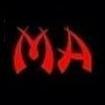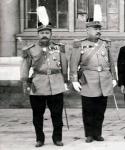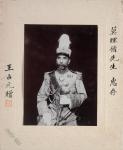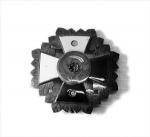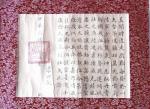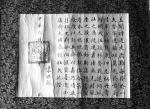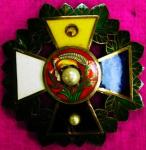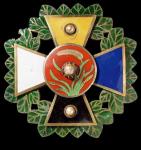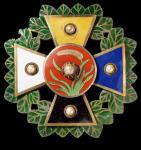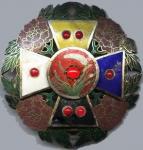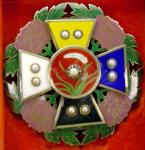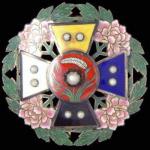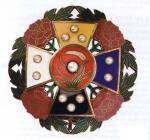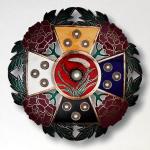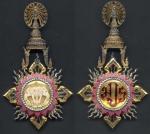-
Posts
22,214 -
Joined
-
Last visited
-
Days Won
68
Content Type
Profiles
Forums
Blogs
Gallery
Events
Store
Everything posted by JapanX
-
Interesting drawing of 2nd class from contemporary book (original design?) Please note strange absence of flowers ;)
-
Document Here we have document for Major-General Xiong Bingkun. He was high ranking officer of Hubei New Army (born in 1885/in 1912 he was Commanding Officer 5th Brigade, Hubei Army/in 1914 he became Commander in Chief Hubei Army/in 1928 he was appointed a Commissioner in Hubei Provincial Government/in 1930 he became Mayor of Wuchang, Hubei/1931 he became the member of Military Advisory Council, retired in 1946/died in 1969) who in the evening of October 10, 1911 fired the first shots in the famous Wuchang Uprising (see http://en.wikipedia....uchang_Uprising). For this he was awarded with 6th class Rank and Merit Order by provisional president, Yuan Shikai in January 1913. Doc
-
5th class "Fourth Order of Rank and Merit" It was awarded to Princes with the title of a Viscount (zǐ)
-
4th class "Third Order of Rank and Merit" It was awarded to Princes with the title of a Count (bó) This specimen has red pearls! Most likely later replacement (?)
-
3rd class: "Second Order of Rank and Merit" It was awarded to Princes with the title of a Marquis (hóu)
-
2nd class: "First Order of Rank and Merit" It was awarded to Princes with the title of a Duke (gōng). 19 recipients are known of this class (Premiers, Military Governors of Provinces, some Ministers etc.)
-
1st class “Grand Order for Rank and Merit" Intended for Princes with the title of a Wang (Prince of the Highest rank) and for ex-Presidents of the Republic. Since 1916 could be awarded for foreign Heads of State. 3 recipients are known of this class (two ex-Presidents of Republic – Li Yuan-hung and Hsü Shi-ch’ang and Provisional Chief of the Executive, Tuan Ch’i-jui)
-
The easiest way to distinguished between six classes is the number of pearls on crest rays 1st class breast star has 13 jewels 2nd class breast star has 11 jewels 3rd class breast star has 9 jewels 4th class breast star has 7 jewels 5th class breast star has 5 jewels 6th class breast star has 3 jewels
-
The Order was founded by President Yuan Shi-kai on October 9, 1912 (according to other source August 8, 1912), as the highest order of the Republic (after the Grand Order of course ). It was exclusively for Chinese citizens; only after 1916 the highest class could be given also to foreign Heads of State. It had six classes, for which the holders wore only a breast star, and carried an annual allowance and a title of nobility (up to 1916). Looks like at first Republic was not very republican In 1916 the name of the order was changed to "Order of Merit". Although this order was “a lifetime honour”, in case of treason or criminal/political crime recipient could be striped of award. Interesting that after the death of recipient his descendants or relatives were obliged to hand over his award to authorities, but only few have a chance to do so, since this award was in use only for 17 years.
-
This is undoubtedly the most beautiful (and rare) order of the early Republic. Original chinese name of this decoration word by word translation
-
-
-



